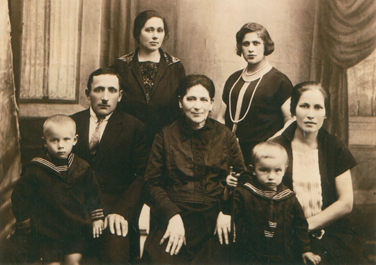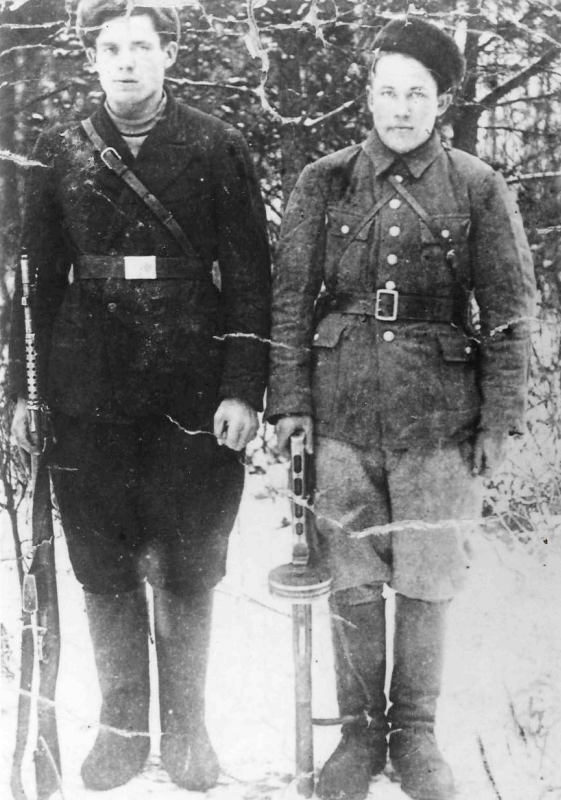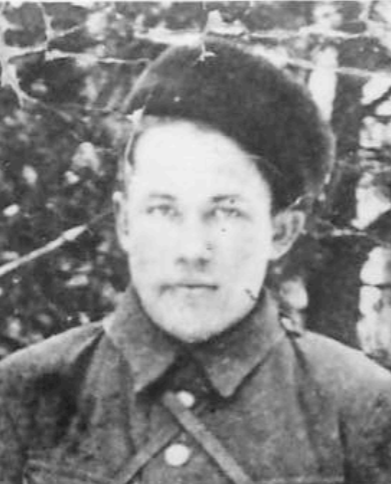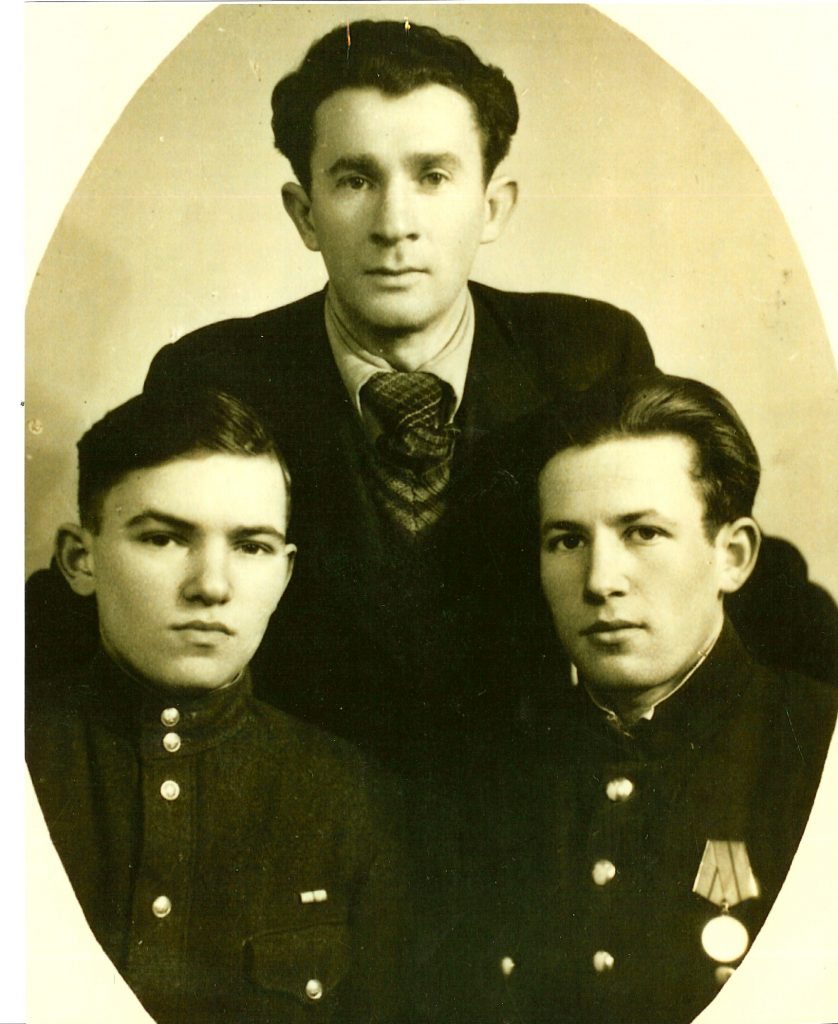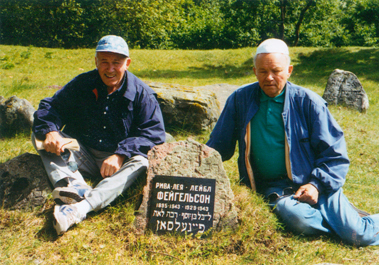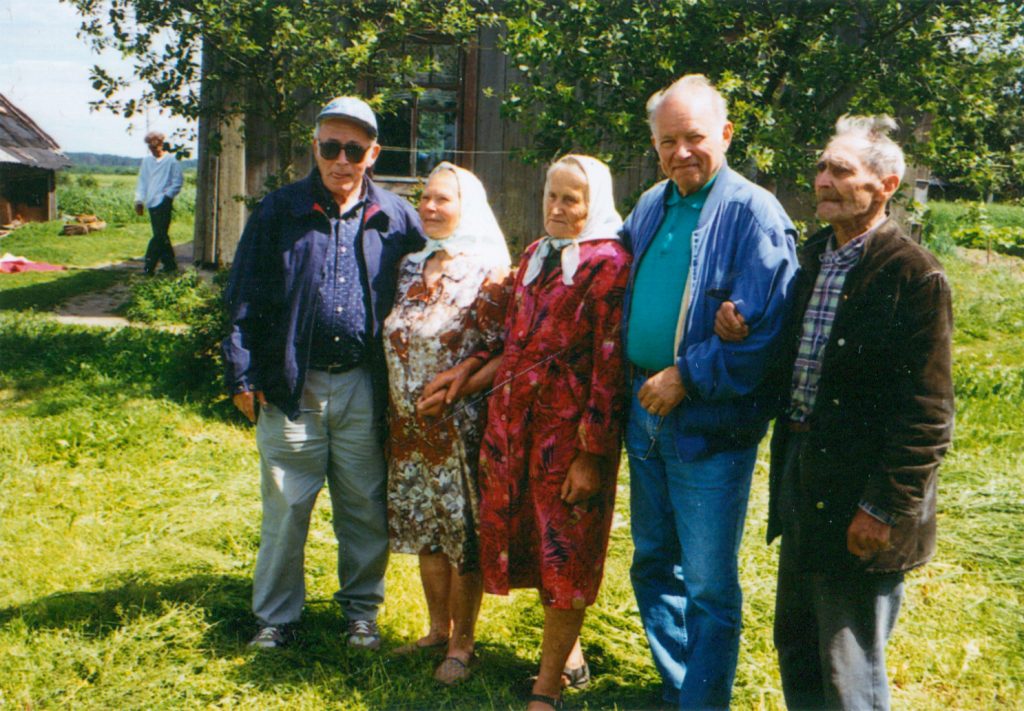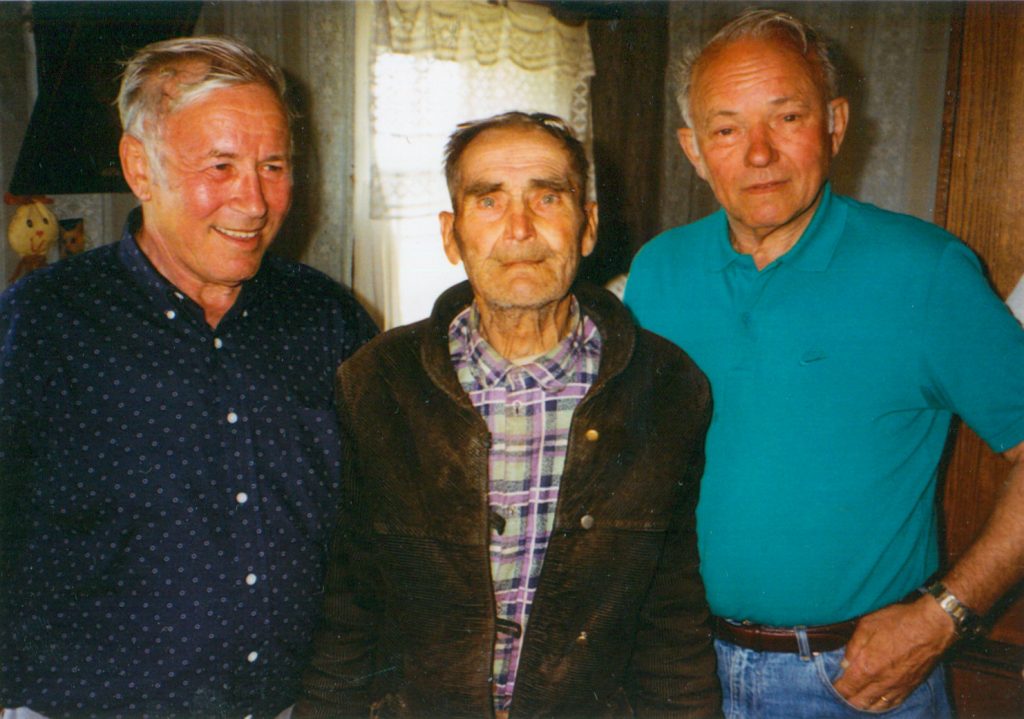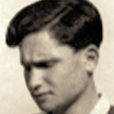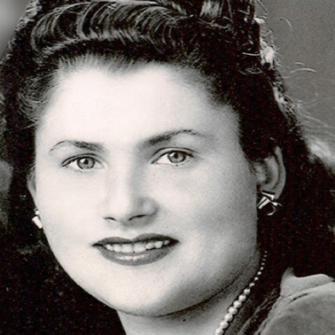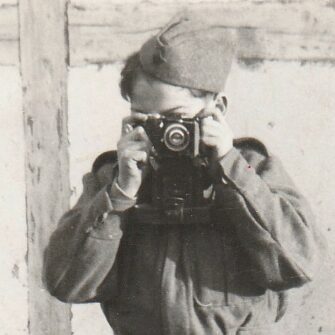Stan Felson was born Zalman Feigelson in 1923 in the small town of Glubokie, Poland. He lived with his parents, Yosef and Riva-Leah, along with two brothers: Don and Labele. His father was a grain merchant, and Zalman enjoyed working in their family store. He lived a comfortable, happy childhood that abruptly ended in 1939.
Until 1920, Glubokie had been part of Russia. The town remained in Polish territory from 1921 until 1939 when it again came under Russian rule through the Molotov-Ribbentrop pact which divided Poland between Germany and Russia. Under the Soviet Occupation, Zalman’s father was forced to close his store and liquidate the business. After they lost the store, his father baled hay for a company controlled by the government, while Zalman worked as a bookkeeper.
Over time, the Jews of Glubokie heard disturbing and frightening news from Jewish refugees who had escaped from German-occupied territories. In the summer of 1941, Hitler invaded the Soviet Union and Glubokie fell under German control. Anti-Jewish laws were enacted, and a ghetto was established in Glubokie. Zalman and his brother, Don, were required to do forced labor for the Germans outside of the ghetto during the day. Zalman worked at a former school which the German Army used as a barracks for soldiers going to and from the Russian front. He labored outside, chopping wood and carrying it inside for heating.
In June 1942 and August 1943, the ghetto was liquidated in two massacres which resulted in the deaths of more than 5,500 Jews. During the first massacre, the Nazis murdered 2,500 Jews. The night before, Zalman stayed with Don who worked in a German POW infirmary. A sympathetic doctor warned the brothers not to return to the ghetto, thereby saving their lives.
In the morning, Zalman returned to his work but the building was eerily quiet. As Zalman entered the building, he heard a German soldier coming down the stairs. Zalman quickly dove under a bunk bed. From his hiding place, he could see the soldier’s boots enter and then walk away. Zalman soon discovered Jews hiding in the building. He hid with them in the attic, their day marked by the sound of relentless shooting. The following day, Zalman left the hiding place to see what was happening. His family had all hidden and survived the massacre.
After the massacre, Zalman knew he had to escape before it happened again. He had heard rumors of Jewish partisans gathering in nearby forests. One day after work, in November 1942, Zalman was standing outside the Judenrat office, when a friend informed him that a Jewish partisan was in the ghetto. The young partisan, Avram-Mitze Friedman, was organizing a group of recruits. Despite his lack of experience and a weapon, Zalman convinced Friedman to let him join. Zalman was not willing to take no for an answer.
Zalman met Friedman at the ghetto fence that night along with thirty other recruits. They sneaked out of the ghetto and trekked roughly sixty kilometers from Glubokie to an area called Lake Narotch near Myadel, where there were swamps and forests. They stayed in a barn until a Russian partisan named Markov arrived and chose Zalman and another man, Yehuda, to be in his unit.
Markov led them to a group of eighty partisans who were camped nearby. Zalman and Yehuda were among the only Jews in the unit. Zalman went on various missions with the partisans and helped guard the camp. Their unit moved often to keep the Germans off their trail. When they were nearing Glubokie, Zalman requested permission to return and rescue his family.
Zalman returned to the Glubokie Ghetto, avoiding German soldiers and he urged Don to join the partisans. At first, Don was skeptical because of Zalman’s appearance. Life in the partisans did not appear to be treating him well. He told Don he would wait for the family in the nearby village of Gwosdova for a few days. Don, Labele, and their mother finally decided to escape. They walked out of the ghetto as if they were going to work and met Zalman in Gwosdova. Their father was afraid to leave and, they found out later, was killed in retribution for his family’s disappearance. His father’s death was a tragedy that stayed with Zalman all his life.
Zalman led his family east toward Zarubovshtina. Along the way, Zalman learned about a new group of partisans nearby. Their commander was Meyerson, a Russian Jew. Meyerson was outgoing, and Zalman had a good rapport with him. His group was getting ready to go west, and Zalman planned to join them until he reunited with Markov’s group. Zalman thought it would be safer to leave his mother and Labele in the East temporarily, as the area was mostly under partisan control. Zalman found a home for his mother and Labele in the village of Liasiny with a widow and her daughter.
After a few months, Zalman heard there had been a search and destroy mission in Liasiny. During such missions, the Germans organized local police and surrounded an area to fight the partisans for control. Zalman returned to Liasiny to find the entire village burned down. He located the widow whom his mother and brother were living with, and she informed Zalman that they had been killed by the Germans, mentioning the name of the farmer in the village who betrayed them. In shock, Zalman returned to Meyerson’s group.
Beginning in the spring of 1943, Zalman and Don were part of the Panomorenko Otriad as Meyerson had obtained permission from Markov to keep Zalman with Meyerson’s unit. Zalman was put in charge of a combat group of twenty men. During his time in the partisans, they sabotaged German transportation and communication lines. On one mission, Zalman traveled east to obtain arms. As his group crossed a railroad track, they were attacked by a German ambush. A bullet went through Zalman’s right calf, but he kept going.
In mid-winter 1944, Zalman’s unit obtained the names of Gentile collaborators who helped the Germans slaughter the Jews in Glubokie. Zalman led his squad to the homes of collaborators and arrested them at gunpoint, turning them over to Meyerson.
In the summer of 1944, Zalman’s unit was liberated by the Russian Army. It was now safe for Zalman to travel home but upon returning, all the homes were destroyed. Zalman returned to Liasiny, found the bodies of his mother and Labele along with a spent bullet, loaded them on a wagon, and reinterred them in a Jewish cemetery in Dockshitsy. When the war officially ended in 1945, Zalman and Don traveled to Germany where they lived in a Displaced Persons camp in the American zone. They felt free for the first time in years.
The brothers were sponsored by their maternal aunt, Kate Ungar, in San Francisco, California. They left for the United States in November of 1947, sailing on the S.S. Marine Flasher. It was in America that Zalman decided to change his name. Zalman Feigelson became Stan Felson. Stan worked as a peddler of hardware, then as a traveling salesman of plastics — tablecloths, baby pants, and bibs— driving through towns in California, Oregon, Washington, and Idaho. He met his wife, Sarah Pearl Benson, a Toronto native, in 1950 when he was invited to a wedding across from the Portland boarding house where he lived. They were married two months later on February 11, 1951,` and settled in Seattle. Stan opened a factory called Finetex Co. and his labels proudly noted: “Made by American Workmen.”
After a time, Stan and Pearl moved back to the Bay Area and lived in Hayward where they had three sons: Leonard, Howard, and Jeff. In Hayward, Stan worked in the construction business with his brother, Don. Stan returned to Glubokie twice with his sons, a very emotional experience for him as he paid his respects at mass graves. He returned to Dockshitsy in 1993, and again with Don in 1994 in search of the place he buried his mother and younger brother. However, the cemetery had either been destroyed or changed so much that it was impossible to locate the unmarked grave. The world Stan lost in the Holocaust left him with a permanent, hovering pain.
Stan taught his children, grandchildren, and great-grandchildren to be proud of their Jewish identity, to live in peace with others, and to help those in need. Stan passed away in 2017.
Stan’s family learned in late 2020 that after Stan left Europe the Soviet government awarded him the Order of the Red Star, one of the nation’s highest honors, for his actions in the partisan movement.

